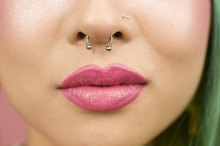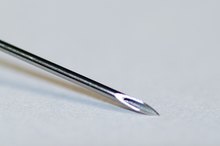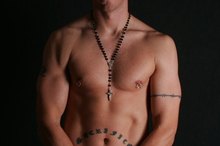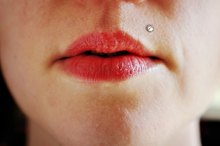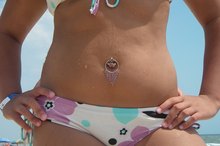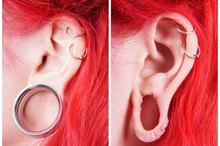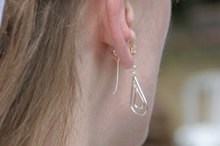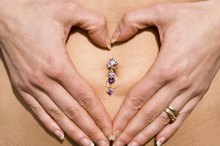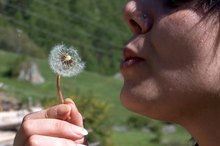Nipple Piercing Problems
A complication with your nipple piercings is a possibility while your piercings are healing. Visiting a professional, licensed piercer to perform your nipple piercings will greatly reduce the risk of complications. A professional piercer with sterile needles, instruments and jewelry is the safest person to perform your nipple piercings. If a person works outside of a shop or offers to pierce you at home, the potential for complications with your nipple piercings is increased.
Irritation
Experiencing irritation in the inside and outside of your nipple piercings during the healing process of nipple piercings is normal. Soreness, redness and exuding of lymph are common. The lymph exuding out of your piercing is white or yellow in color, and dries into a crust, forming on your jewelry. Swelling in the first few weeks after receiving your nipple piercing is also normal. Stages of irritation during the three month to one year healing period is possible. Your nipple piercings may seem healed one week, and then in the next week you may experience a stage of irritation.
Infection
Side Effects of Piercings
Learn More
Fluids with a bad odor, in the colors of gray or green, indicate an infection in your nipple piercings, according to the Association of Professional Piercers. Infection in your nipple piercings may occur for several reasons. If the jewelry is inappropriate in your piercing, allergic reaction is also a possibility. Professional piercers place jewelry in your piercings that is long enough to allow for swelling and for your piercings to drain fluid. If the jewelry is too small or tight, the fluid can become trapped inside the piercing. Touching your nipple piercings with dirty hands or allowing contact with someone's saliva or hands can also lead to infection.
Mastitis
Mastitis is an inflamed, infected milk duct of the breast. Mastitis can occur from nipple piercings if the piercing is performed too deep or if you are not properly cleaning and are introducing bacteria into the nipple piercing on a daily basis. The symptoms of mastitis are fever, swelling, breast tenderness and redness, according to MayoClinic.com. Untreated mastitis can lead to an abscess or the need for surgery. Visiting your physician and taking a full dose of prescribed antibiotics generally clears up mastitis.
Migration
Nipple-Piercing Facts
Learn More
The process of migration entails your body pushing your nipple jewelry to the surface of the nipple and expelling the jewelry completely from the body. Migration occurs when the nipple piercing is performed too shallow--near the tip of the nipple--or if the jewelry is too heavy for your anatomy. Visiting a professional piercer who examines your anatomy and explains the jewelry options before proceeding with a nipple piercing will greatly reduce the risk of migrating nipple piercings. A professional piercer will refuse to pierce you if your nipples are too small to support jewelry in the nipple piercings to avoid a heightened risk of migration.
Tearing
Ripping or tearing of your nipple piercings is possible when changing clothing, washing the piercings in the shower or during sexual contact. Professional piercers recommend washing your nipple piercings with your hands, instead of a washcloth, for two reasons. Washcloths harbor bacteria while hanging in a shower and the loops from stray threads may catch on your nipple jewelry and rip the jewelry out of the piercing. While changing shirts or bras, the same ripping or tearing may occur. During sexual contact, it is possible for a partner to rip or tear your nipple piercings by pulling or biting the jewelry. Alerting your partner when you feel pain or a ripping sensation can prevent ripping or tearing of your nipple piercings.
Related Articles
References
Resources
Writer Bio
Maude Coffey retired after 10 years working as a professional body modification artist in the tattoo industry. She is certified in principles of infection control and blood-borne pathogens. Coffey received additional training and classes, such as anatomy, jewelry standards and aftercare, from the Association of Professional Piercers. Coffey aims to educate about safe tattooing and piercing practices while writing for various websites.
